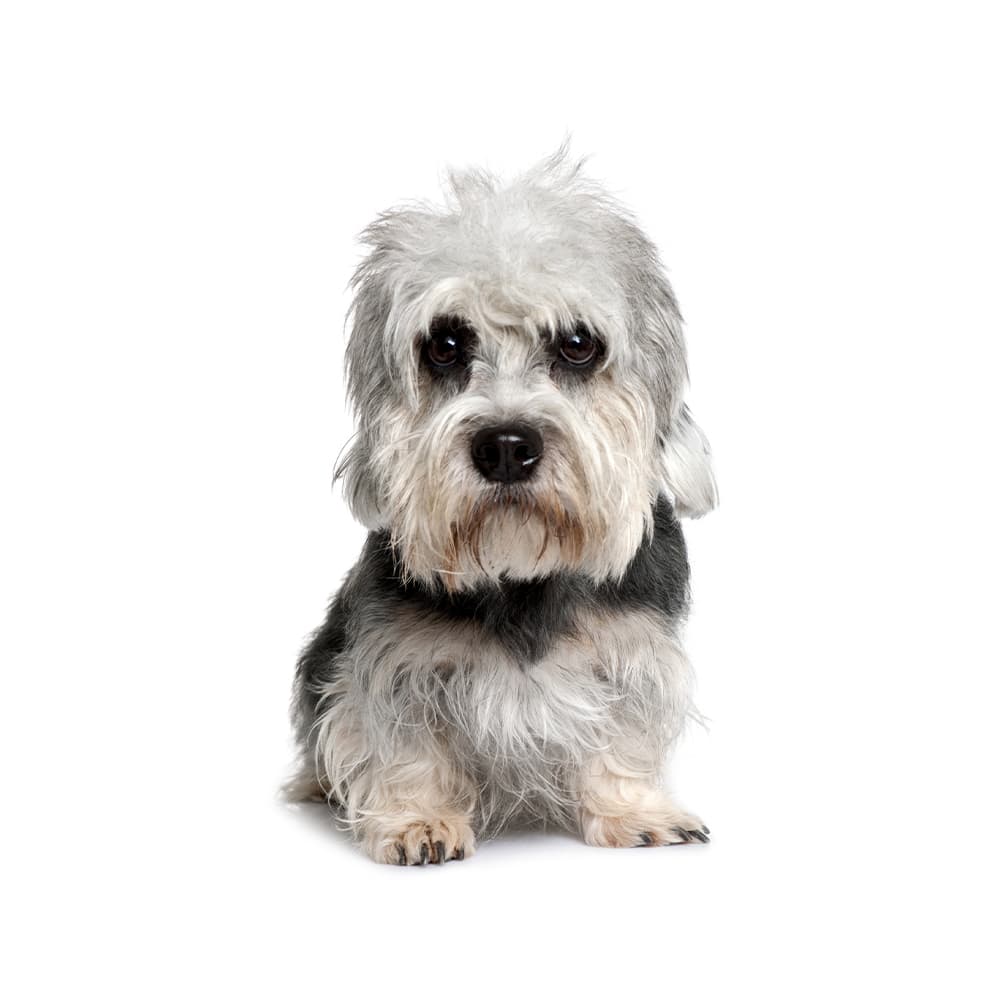Discover your dog's connection to this breed and 200+ others


Discover your dog's connection to this breed and 200+ others



The Dandie Dinmont Terrier is an old breed with roots in the border region between England and Scotland. It was initially bred in the 1700s for hunting badgers and otters, eventually gaining recognition as a distinctive breed by the early 19th century. The breed was named after a character, Dandie Dinmont, from Sir Walter Scott's novel "Guy Mannering," published in 1814, who owned terriers of this kind. The Dandie has a long, low torso and short legs. These little characters are said to be excellent watchdogs with noticeably big barks.
The Dandie Dinmont Terrier is a generally healthy breed, but may suffer from some health conditions including brachygnathism, chondrodysplasia, chondrodystrophy, primary angle closure glaucoma, hyperadrenocorticism, oligodontia, portosystemic shunts, prognathism, ulcerative keratitis, and cheyletiella mite infections.
Dandie Dinmont Terriers are known for their independent and intelligent nature. They can be reserved around strangers but are generally affectionate and loyal towards their families. Despite their small size, they have a strong hunting instinct and may show aggression towards small animals if not properly trained. They are also known for their unique "lion's roar" of a bark.
Training a Dandie Dinmont Terrier requires patience due to their independent streak, but their intelligence makes them capable learners. They are generally good with children but, like all breeds, should be supervised to ensure safe interaction.
Overall, Dandie Dinmont Terriers are loyal, affectionate dogs that make excellent companions for those willing to meet their needs for moderate exercise and mental stimulation.
A canine genetic lineage is a group of individuals or entire breeds that descended from common ancestors predating modern breed formation. Often these lineages are associated with a ‘type’ of dog with a unique historical working role and associated behaviors (e.g., herding, scent hunting, etc.).
Terriers were bred to hunt pests like rats, foxes, and badgers. Terriers are tenacious and fearless with high energy levels, strong prey drive, and feisty temperaments which all help in their hunting abilities. Terriers were used as mighty hunters in both urban and rural settings. Terriers have natural hunting instincts and protective tendencies.
Example breeds with ancestry from this lineage include Jack Russell Terrier, Scottish Terrier, and Yorkshire Terrier.
The Dandie Dinmont Terrier was recognized by the United Kennel Club in 1918.
The Dandie, which was entered into the American Kennel Club (AKC) in 1886, is the only AKC breed named after a fictional character.
According to the AKC, Dandie fanciers say that every Dandie alive today can be traced back to a dog name Old Ginger who was sired by a dog named Old Pepper
Queen Victoria of England owned a Dandie.
Doi:10.1002/9781119540687
https://www.ukcdogs.com/dandie-dinmont-terrier
https://www.petmd.com/dog/breeds/c_dg_dandie_dinmont_terrier
https://www.akc.org/dog-breeds/dandie-dinmont-terrier/
https://www.fci.be/Nomenclature/Standards/168g03-en.pdf
Recommended by top vets with decades of experience
21 breeds
64 genetic health markers
50 genetic trait markers
